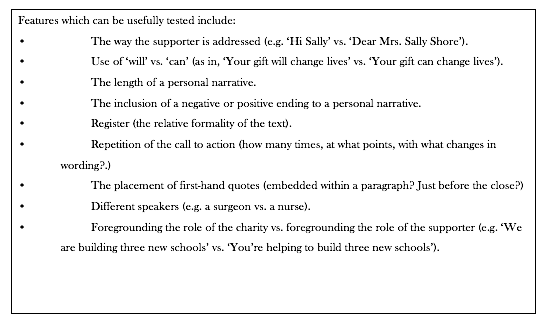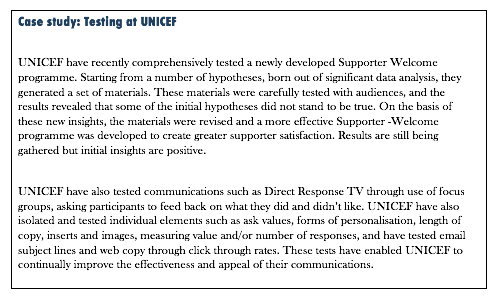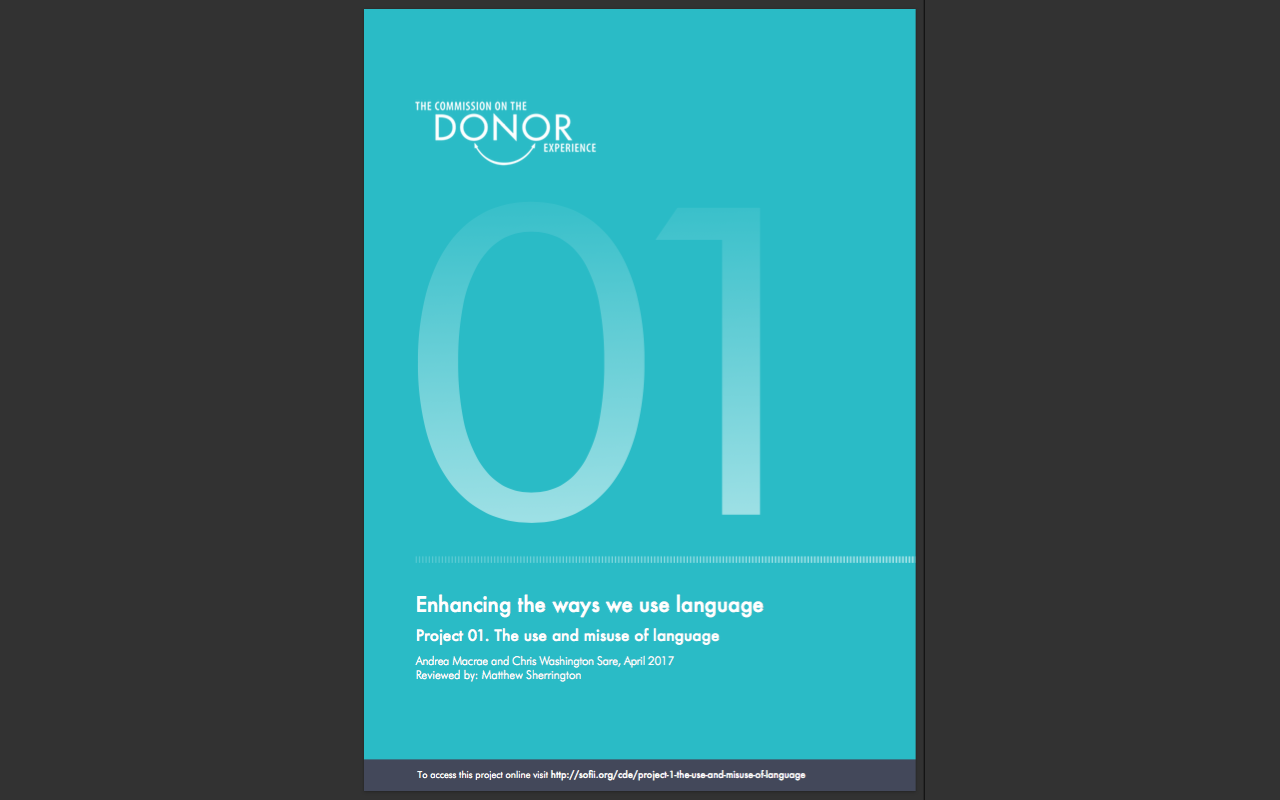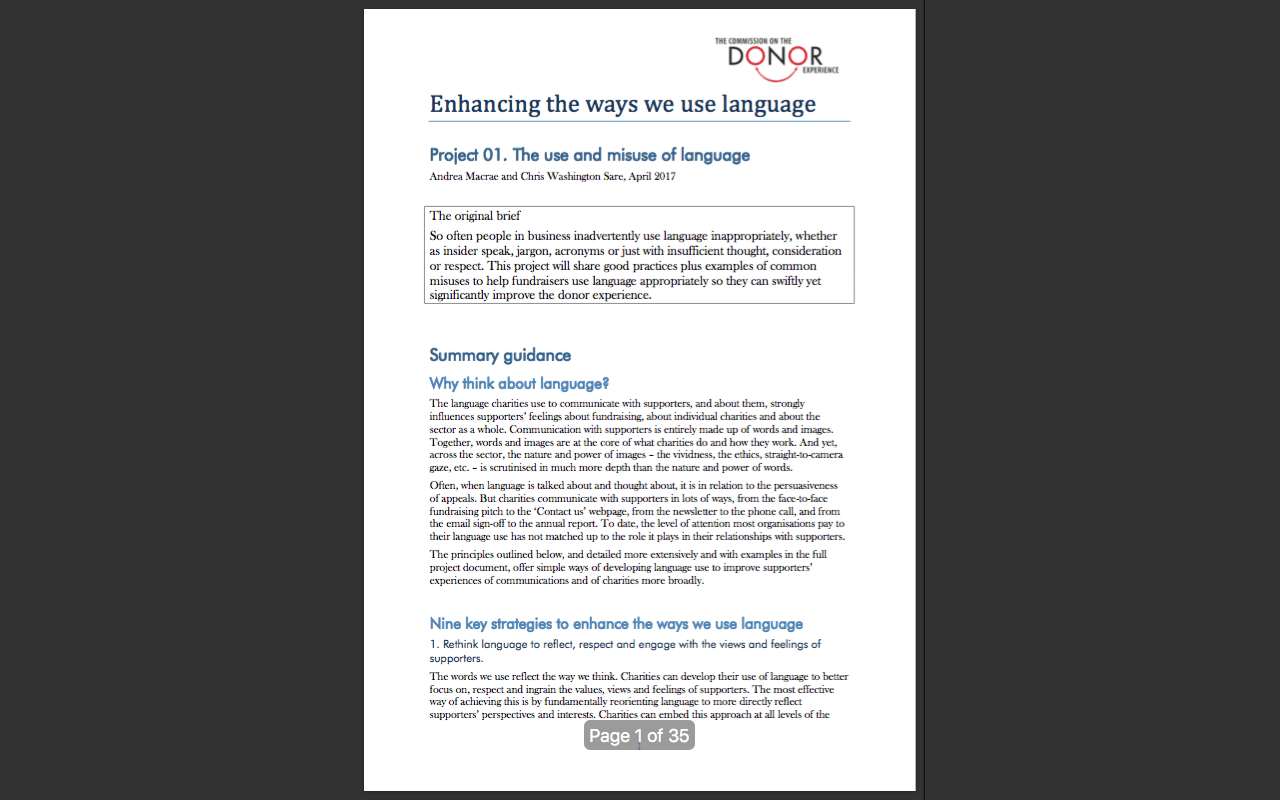CDE project 1 section 9: test your communications to find out what works best for your charity and your supporters.
- Written by
- The Commission on the Donor Experience
- Added
- April 23, 2017
Enhancing the ways we use language
CDE Project 1: The use and misuse of language
Andrea Macrae and Chris Washington Sare, April 2017
Reviewed by Matthew Sherrington
9. Test your communications to find out what works best for your charity and your supporters.
Banners, logos, photos and inserts are tested with rigour across the sector. Some aspects of language use are tested too, but often only key propositions, email subject lines and the like. A lot of beliefs about charity copy writing have been inherited over the years, filtered down from practices which might not really fit your specific charity or work with the kinds of communication channels you use. It is worth checking and challenging some of these inherited assumptions about language and communications, and finding out how relevant and valid they are for your charity. There are lots of simple ways to test communications copy which can really improve understanding of what works for your supporters and what does not.
Lots of charities test new copy against a ‘control’ text – one which has worked well before. Testing one email against a control email and finding the former out-performs the latter, in terms of responses generated, does tell us that one email is better than the other, but it doesn’t tell us why. It doesn’t reveal the particular strengths of one email over another, because it doesn’t identify which features actually make it work. Looking at some of the features which differ in the two versions, or exploring responses in a bit more detail with focus groups, will give us some clues. This is a great first step in testing, but you can go further. On the basis of those clues, you can develop more nuanced versions of the email, isolating and varying particular features in a controlled way. These versions are worth testing with a second round of focus groups. This will give you insights so much richer than the first stage of testing – insights which you can draw on again and again in the future.


Comparing the effectiveness of versions in which features like these are varied will show you how you can make language work best for your message and your cause. These tests are immeasurably more valuable than simply testing one version against a control text. The kinds of insights these tests give you, about subtle but crucial differences in effectiveness, can reveal many ways of enhancing current and future communications exponentially. Going beyond the ‘control copy vs. version b’ lets you find out what really works best in your charity and for your supporters.



















